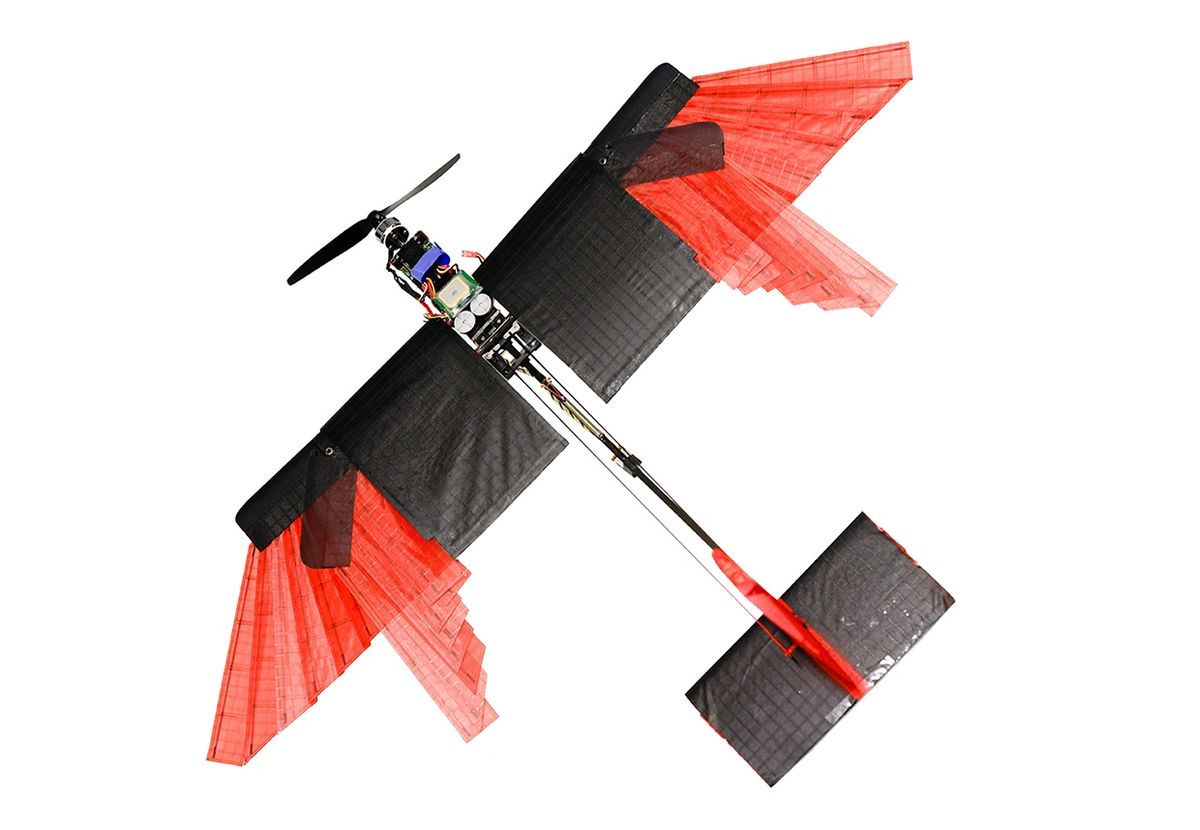Birds have been developing winged flight technology ever since they stole it from the dinosaurs back in 160 million years ago. Early on, top bird aeronautical engineers realized that wings have a fundamental problem: They give you both lift (which you want) and drag (which you don’t). Lift is important for take-offs and landings and maneuverability, but once you get off the ground and are going fast enough in a straight line, mostly wings just keep you from going even faster.
The solution that birds came up with was a clever one: Wings that can change their shape. Thanks to overlapping feathers and a joint at the end of the wing, most birds can fold their primary flight feathers back, which significantly reduces the surface area of their wings. This allows them to switch back and forth from long, maneuverable wings that are good at turning and soaring to short, stubby wings that are optimized for speed.
Humans have been a bit slow at catching up with birds on this—the best we’ve been able to do are some mechanically complicated and presumably very expensive wings that ponderously swing back and forth a little bit, but isn’t it about time we catch up to this technology that’s over a hundred million years old? At the École Polytechnique Fédérale de Lausanne (EPFL), in Switzerland, Dario Floreano’s lab certainly thinks so, and they’ve been flight testing a small drone with feathered, folding wings that can maneuver like real birds do.
These folding wings can vary their surface area by 41 percent: When the wing is completely retracted, lift decreases by 32 percent, and drag decreases by 40 percent, boosting the top speed of the drone from 6.3 meters per second to 7.6 meters per second. However, the loss of wing area makes the drone less maneuverable, increasing its turning radius from 3.9 meters to 6.6 meters. This is the trade-off inherent to all wings, and it’s why morphing wings are so important: You can choose to trade maneuverability for speed whenever you want, and it’s much more common to need one significantly more than the other than to need both at the same time.

For drones, wings like these add an additional challenge, since they take up the area that most aircraft dedicate to control surfaces. Usually, roll control is accomplished by putting little flaps (called ailerons) on the trailing edges of wings, but EPFL’s morphing design makes that impossible. The fix for this is to just keep on doing what birds to, and take advantage of the wing morphing to give you flight control: By asymmetrically folding the wings (that is, folding one side but not the other), the drone is able to roll quite well. In fact, wing morphing works just as well as conventional ailerons in most situations, and for very sharp turns, it works slightly better. Interestingly, test flights of the drone showed that pitching up slightly before rolling “dramatically increased” roll performance, which is not how conventional aircraft work. The researchers comment that “this behavior underlines the necessity to develop specific control laws in order to obtain the best from morphing technologies.” In other words, control with morphing wings might be even better than we realize, we’re just not sure how to take advantage of it yet.
The researchers hope to improve their drone by doing the obvious thing, which is to make it even more bird-like. This includes adding curved feather shafts to increase lift, and putting even more feathers on the wing, this time along the leading edge. Long term, they’re looking at replacing the current (fragile and complex) tendon-hinge folding mechanism with something a little more robust, using origami manufacturing or variable stiffness materials.
“Bio-inspired Morphing Wings for Extended Flight Envelope and Roll Control of Small Drones,” by M. Di Luca, S. Mintchev, G. Heitz, F. Noca, and D. Floreano, was published in Interface Focus.
[ EPFL ]
Evan Ackerman is a senior editor at IEEE Spectrum. Since 2007, he has written over 6,000 articles on robotics and technology. He has a degree in Martian geology and is excellent at playing bagpipes.



